5 Of The Weirdest Moons In The Solar System
Posted by Editor on September 8th, 2009Ah, moons. So often overshadowed by your rocky, gassy, and thermonuclear overlords, you help invoke tides, stabilize axial tilts, sculpt and replenish rings, and provide at least one species with a stepping stone to timidly venture from the safety of their home planet. In this article we pay tribute to all those underappreciated planetary custodians by recognizing five of the downright weirdest moons in the solar system.
1. Titan (Saturn)
Imagine a dreamy world with clouds, wind, rain, rivers, lakes, shore lines, sand dunes and seasons, and this distant moon of Saturn is probably the last destination that springs to mind. Titan not only exhibits all of these familiar characteristics, but it is also the only moon known to have a thick atmosphere – composed mostly of nitrogen too, just like Earth.
That’s where the similarities just about end, though. If you excitedly read the paragraph above, hopped into the nearest spacecraft, journeyed the 750 million miles to Titan, landed on the surface and casually strolled outside to stretch your legs or go for a swim, you might be in for an unpleasant surprise. With no oxygen to breath, its thermostat set to a chilly -179° Celsius, impenetrably dim, hazy skies and vast lakes filled with liquid natural gas; Titan offers a fairly unforgiving environment for life as we know it.
2. Io (Jupiter)
Like a cosmic game of tug o’ war, Io is gravitationally pulled in several directions at once by its parent planet and fellow Galilean moons. All this interaction generates a heck of a lot of internal heat that eventually needs to be released. As a result, the Jovian moon is currently the most volcanically active body in the solar system. The tidal forces inflicted on Io are so strong that its solid surface may contract and expand as high as 330 feet, as opposed to Earth’s comparatively pathetic high and low tides of about 60 feet.
3. Europa (Jupiter)
It’s been about 30 years since hydrothermal vents were discovered in Earth’s oceans, and along with them the first community of organisms that relied on minerals and bacteria extracted from deep within the planet to survive, rather than sunlight. As evidence began to mount that a liquid water ocean could exist beneath Europa’s icy crust, so then did the possibility of finding life beyond Earth.
The same processes responsible for turning Io into an overflowing cauldron of silicate and sulphur could also play a key role in keeping Europa warm enough for microbial life to survive in a sub-surface ocean. Unfortunately, sending Bruce Willis and his crack team of oil drillers to find this ocean would be a mission somewhat difficult for NASA to justify in today’s economy, so we may have to wait a decade or two before probes can investigate the moon a little closer to make sure it’s worth the effort.
4. Mimas (Saturn)
I could rattle off a few mildly interesting facts about this moon, like how it’s largely responsible for creating the famous Cassini Division in Saturn’s rings or that it was almost shattered by an enormous impact that left a 130-kilometer-wide crater; but you’re probably staring blankly at the picture above, wondering if you should stock up on canned goods and hustle your family into a bomb shelter to await inevitable invasion by the Galactic Empire (coincidence? Or… cosmic conspiracy?!). FYI: My bunker has Wi-Fi.
5. Triton (Neptune)
Billions of years ago Triton is thought to have existed as one of two nameless, oversized snowballs in the Kuiper Belt, happily traveling around the sun while orbiting a common center of mass with its companion. At some point in time this duo moved a little too close to Neptune and the gas giant’s superior gravity proceeded to capture what is now Triton by wrenching the object out of its heliocentric orbit, subjecting it to a future of planetary subordination. One of the repercussions of this traumatic event is also what makes Triton so unique; it is the only large moon in the solar system that has an orbital direction opposite to that of its planet’s rotation – also known as a retrograde orbit.
Unfortunately for Triton, its orbital energy is being steadily depleted by the conflicting influence of Neptune’s rotation. As a result, the moon is gradually drifting closer to Neptune, all but ensuring one of two unhappy fates: breaking apart due to tidal forces or violently crashing into Neptune in a mere few billion years.
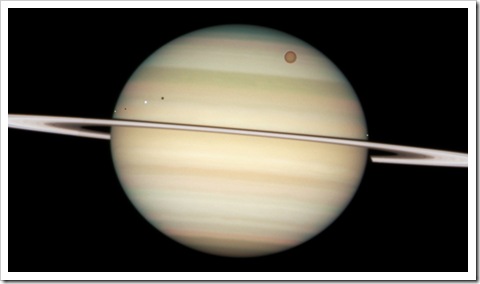
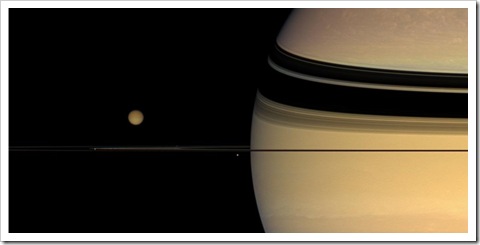
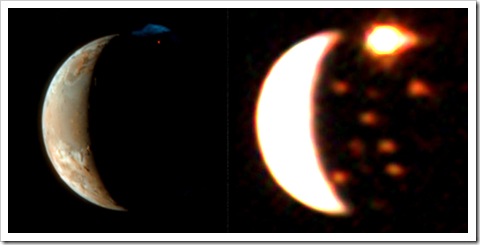
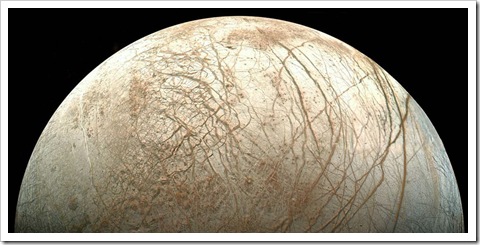
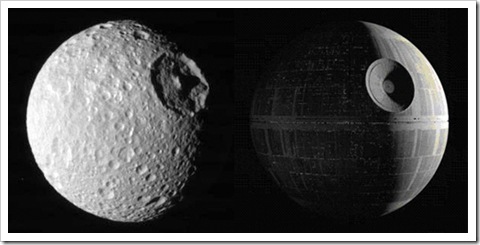
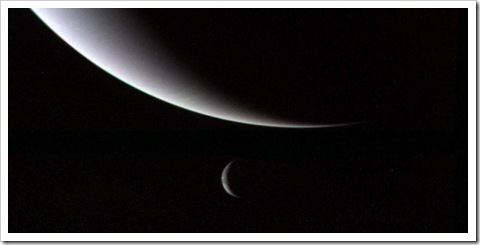
December 30th, 2009 at 2:50 pm
I don't tjink that was really… uhm interesting but then again i wasn't really paying much attention to it. So get more interesting things plz.
February 23rd, 2010 at 5:36 am
amazing!
never seen one in th internet!!!!!!
February 23rd, 2010 at 11:36 am
amazing!
never seen one in th internet!!!!!!